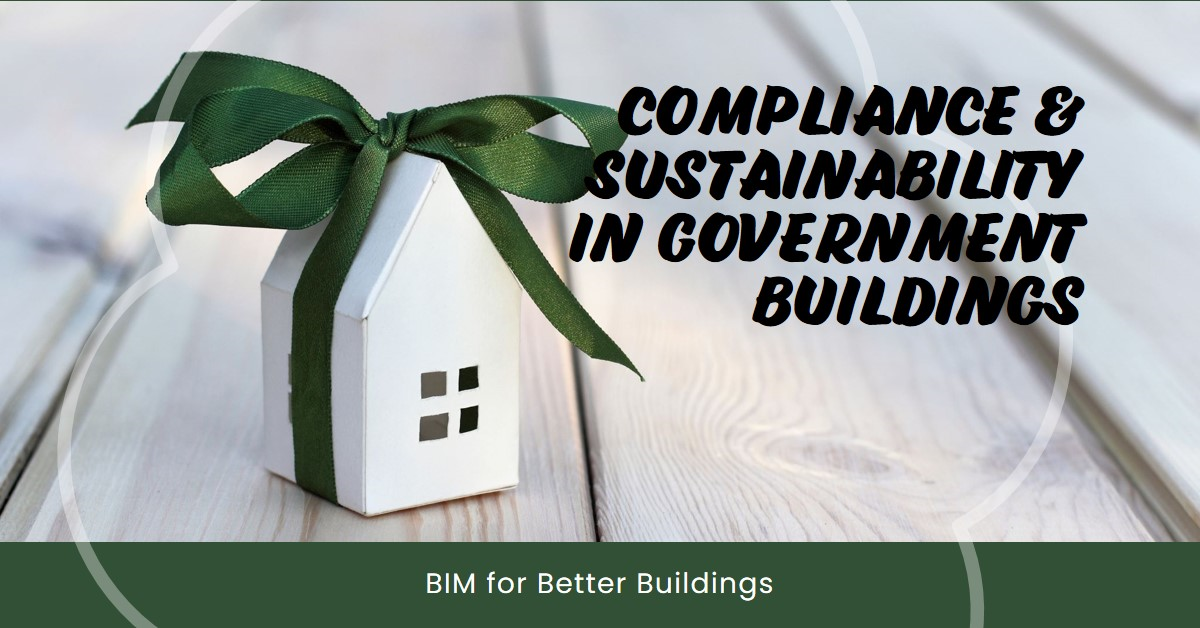
BIM for Government: Compliance & Sustainable Buildings
The construction industry is undergoing a significant transformation, driven by a growing emphasis on sustainability and the need to comply with increasingly stringent building regulations. Government agencies, at the forefront of shaping the built environment, play a crucial role in ensuring new construction projects adhere to these standards. Building Information Modeling (BIM) has emerged as a powerful tool in this regard, empowering agencies to navigate complex regulations and design sustainable buildings for the future.
The Challenge of Compliance
New building regulations are constantly being implemented, often focusing on energy efficiency, water conservation, and the use of sustainable materials. A 2022 report by the World Green Building Council found that 60% of governments have implemented or are developing mandatory green building policies [source: World Green Building Council – Bringing embodied carbon upfront]. This trend is only expected to accelerate as environmental concerns take center stage.
For government agencies, ensuring compliance with these regulations can be a daunting task. Traditional paper-based methods of construction management make it difficult to track and verify the use of sustainable materials, assess energy efficiency, and identify potential design flaws that could lead to non-compliance.
BIM: A Catalyst for Compliance
BIM offers a comprehensive solution to these challenges. It’s a collaborative process that creates a digital representation of the entire building lifecycle, encompassing design, construction, and operation. This digital model integrates all relevant building information, including materials, energy usage, and environmental impact.
Here’s how BIM empowers government agencies to achieve compliance with new building regulations and sustainability standards:
- Enhanced Design Review and Analysis: BIM models allow for thorough analysis of a building’s energy performance, water usage, and overall sustainability. Agencies can identify potential compliance issues early in the design phase, leading to cost-effective solutions and avoiding costly rework later.
- Streamlined Collaboration: BIM facilitates collaboration between architects, engineers, and government officials throughout the project lifecycle. This fosters better communication and ensures everyone involved has access to the latest and most accurate building information.
- Data-Driven Decision Making: BIM models provide a wealth of data that can be used to assess the sustainability of different design options. Agencies can make informed decisions about material selection, construction methods, and operational strategies to optimize building performance.
- Improved Regulatory Compliance: BIM models can be used to generate detailed reports on building characteristics and materials used. This facilitates faster and more efficient compliance checks for government agencies, reducing administrative burdens.
The Sustainability Imperative
Beyond compliance, BIM empowers government agencies to champion sustainable construction practices. Here are some key benefits:
- Reduced Energy Consumption: BIM models allow for the simulation of building energy performance under different conditions. This enables agencies to design buildings that consume less energy, leading to lower operating costs and a smaller environmental footprint.
- Enhanced Material Optimization: BIM facilitates the selection of sustainable and locally-sourced materials throughout the construction process. This reduces the environmental impact of construction and supports local economies.
- Improved Facility Management: BIM models can be used to manage facilities efficiently throughout their lifecycle. This allows agencies to identify areas for improvement in terms of energy and water usage, leading to long-term cost savings and a more sustainable built environment.
Risentech: Partnering for Sustainable Success
[Risentech, a company specializing in BIM modeling services], can be a valuable partner for government agencies looking to leverage BIM for sustainability and compliance. With their expertise in BIM modeling and experience working with manufacturing companies, Risentech can help navigate the complexities of sustainable building design and ensure projects meet all regulatory requirements.
FAQs
- Is BIM mandatory for government projects?
While not universally mandated, BIM is increasingly being required for public projects in many countries. It’s best to check with your local government agencies for specific requirements.
- What are the different BIM levels?
BIM Level 2, which involves collaborative working with shared 3D models, is a common requirement for government projects in some regions.
- How much does BIM implementation cost?
While there are initial costs associated with BIM software and training, the long-term benefits in terms of improved efficiency, reduced rework, and lower operating costs often outweigh the initial investment.
- What are the key skills needed for a successful BIM implementation?
A successful BIM implementation requires a collaborative approach and skilled personnel with expertise in BIM modeling, design coordination, and data management.
Conclusion
Building a sustainable future requires a collaborative effort from all stakeholders. BIM empowers government agencies to take the lead in this endeavor by ensuring compliance with new building regulations and promoting sustainable construction practices. By leveraging the power of BIM, government agencies can design and build buildings that are not only compliant but also efficient, environmentally responsible, and contribute to a greener future.
But the question remains, are government agencies fully equipped to harness the full potential of BIM?





Leave Your Comment